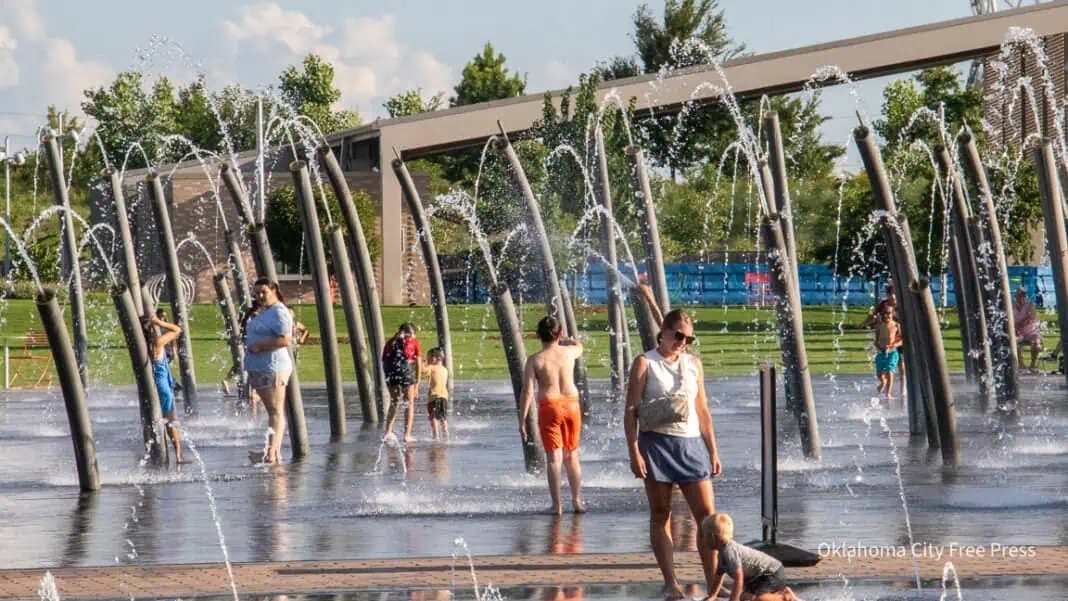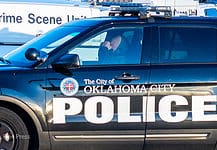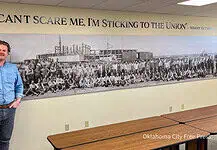OKLAHOMA CITY, OK – As the Trump Administration continues to cut federal climate programs, Oklahoma City’s Office of Sustainability is moving forward to prepare the community for extreme heat without the National Oceanic and Atmospheric Administration’s (NOAA) support this year.
The Office of Sustainability has partnered with NOAA on a few projects in the past two years. They first partnered in 2023 to map the city’s hottest neighborhoods. Then, in 2024, NOAA helped the city organize a tabletop exercise on emergency preparedness for first responders when extreme heat hits.
Now, the city’s sustainability office is working without the federal agency to organize workshops for heat preparedness, work on recommendations for city code changes, and promote tree planting and native landscaping.
What are urban heat islands, and why does it matter?
Urban heat islands form when built environments, like concrete, asphalt and buildings, trap heat, making neighborhoods in cities hotter than nearby greener areas. These temperature differences are often worse in low-income communities, where tree coverage is sparse and access to air conditioning is limited.
In the summer of 2023, volunteers and city staff took part in NOAA’s Urban Heat Island mapping campaign, collecting data with thermal imaging, air quality and heat-sensing devices.
Results, compiled into a map presented by Heat.gov, showed that some neighborhoods during the hottest times of the day were 15 degrees hotter than other areas due to an uneven distribution of green space in the city, making extreme heat an unequal public health threat.
“Most news outlets get the temperature from Will Rogers Airport, but on the map that’s in one of the cooler parts of the city,” said Sarah Terry-Cobo, a city planner for the Office of Sustainability, in an interview with Oklahoma City Free Press.
Terry-Cobo recalled many residents experiencing more days with triple-digit temperatures last year, but official readings indicated cooler temperatures because buildings and roads trap heat, while open fields surround the airport.
“Last year, the city officially recorded nine days above 100 degrees—but it felt much hotter in neighborhoods affected by urban heat islands,” said Terry-Cobo. “So if the forecaster says it’s 84 degrees, that’s 84 at the airport, but downtown it’s 15 degrees warmer, making it feel like it’s 100.”
What came from NOAA’s partnership?
After the 2023 mapping campaign, OKC’s Office of Sustainability co-hosted a two-day tabletop emergency exercise with NOAA and the city’s Office of Emergency Management. Terry-Cobo told Free Press that NOAA provided organizational support.
“We had 70 people across city departments, social service providers and NOAA staff come together to ask: how do we respond to extreme heat?” Terry-Cobo said. It kind of felt like an RPG, but for emergency planning.”
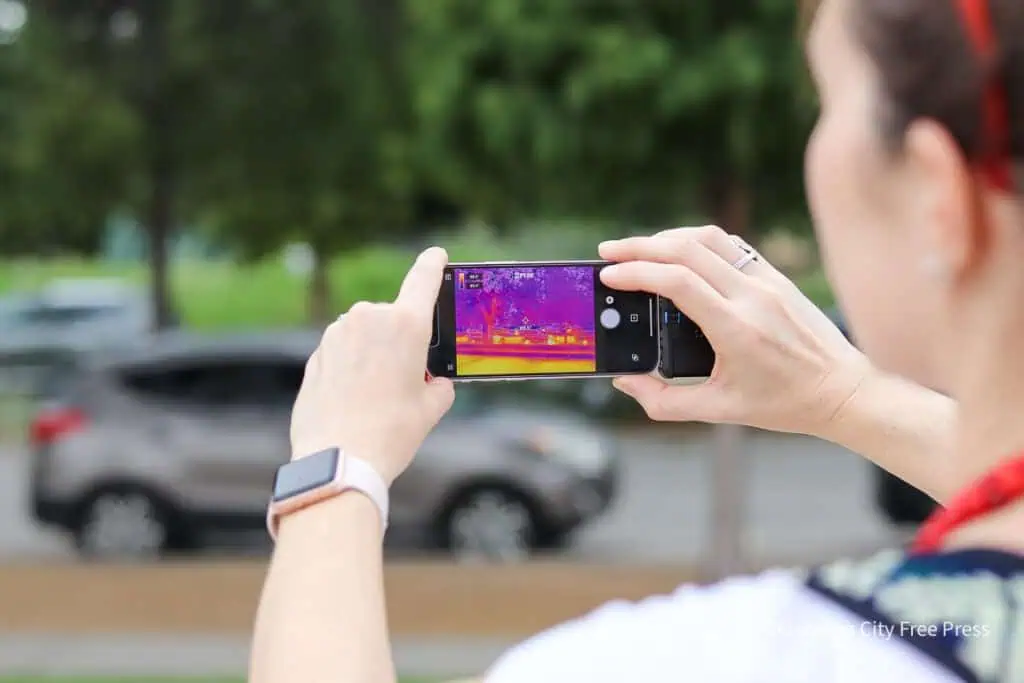
The event led to dozens of recommendations and a formal after-action report, which now guides an action report the city is working on to help mitigate extreme heat. It has yet to be published.
This August, the city will host a follow-up one-day workshop, this time without NOAA, to determine agency responsibilities, assess public understanding of heat risks, and form a working group to guide long-term education and response.
“We want to come out of this able to say, ‘Here’s who to call. Here’s where to go in a heat emergency, here’s how to stay prepared,” Terry-Cobo said.
What is the city doing now without NOAA?
This summer, the Office of Sustainability is organizing a new one-day workshop in August to continue building on the work started with NOAA in previous years.
The event will bring together city staff, public health experts and social service providers to identify which agencies are responsible for responding during extreme heat, assess what residents already know about staying safe, and create long-term strategies for education and outreach.
“We’re working on creating working groups for education and identifying new locations for hydration stations,” Terry-Cobo said.
The workshop will result in an updated list of recommendations and an “after-action” report to guide policy changes and public education ahead of next summer.
Creative cooling strategies
The city is pursuing multiple strategies to reduce heat and improve livability outside of planting trees. One focus is reducing the amount of heat-trapping pavement through zoning and land use changes.
The Office of Sustainability is providing research and recommendations to support the city’s upcoming code update, including eliminating parking minimums in some districts to reduce concrete surfaces and allow for more green surfaces like rain gardens.
Terry-Cobo said the Office of Sustainability is also working on a “solar-by-right” ordinance idea that would allow businesses to install solar panels over parking lots without needing a zoning variance, making it easier to create shaded, energy-producing structures citywide.
Native landscaping is another promising approach. At Scissortail Park, Terry-Cobo recorded temperatures of bioswales (a form of green stormwater infrastructure) filled with native plants just two degrees higher than juvenile tree shade, while a nearby playground registered 170 degrees.
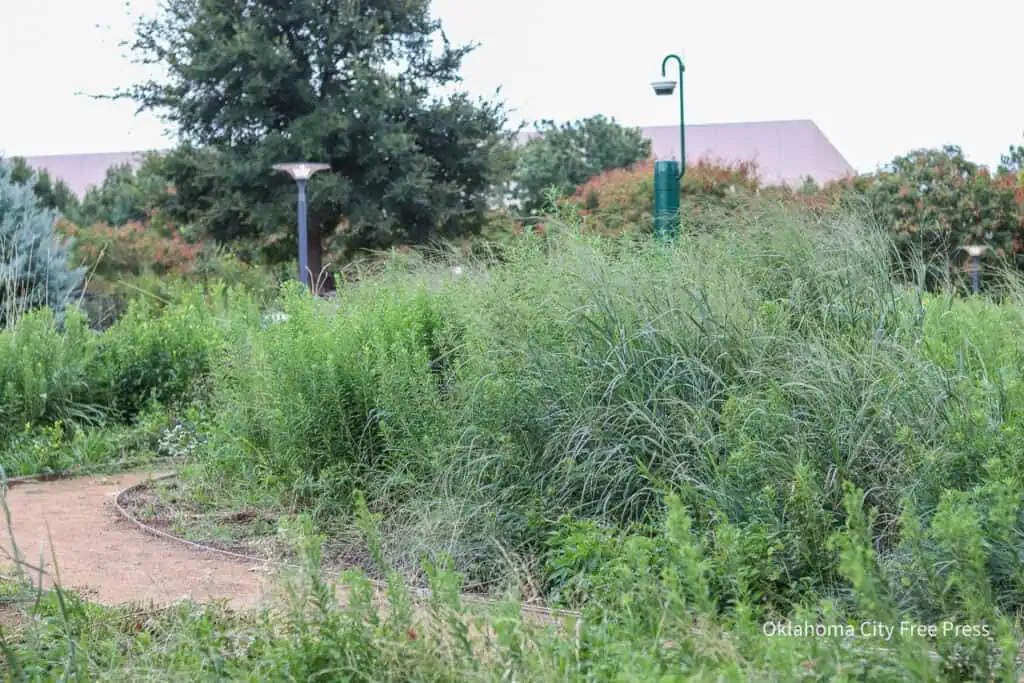
“Native landscaping can cool almost as well as young trees—it’s affordable, scalable, and immediate,” Terry-Cobo said.
Thermal imaging data from places like Scissortail and Paseo is used to advocate for policy changes and to build public awareness around how different building materials and design choices impact neighborhood temperatures.
What can you do?
While the Office of Sustainability works on long-term solutions, community members can take simple steps now to protect themselves and others from extreme heat.
“Know the weather forecast and plan your day around it if you can,” Terry-Cobo said. “If you don’t have air conditioning in your car, ask yourself if you can travel earlier in the morning when it’s cooler.”
Terry-Cobo recommends checking heat.gov for local heat risk forecasts and downloading OSHA’s free Heat Safety Tool app, which provides real-time alerts and safety tips based on humidity and temperature.
“Even tiny changes help,” she said. “Being weather-aware, that’s the big thing.”
Outside of being weather aware, Terry-Cobo said it’s important for community members to know their risk for heat-related illness.
“There are five important categories you should know if you fall into: children, people over 65, people with chronic illnesses, people on medications, and pregnant people fall into high-risk categories for heat-related illness,” she said.
She also encourages the community to learn more about tree care, support local efforts like OKC Beautiful’s community forestry program, and stay engaged as the city develops new cooling strategies.
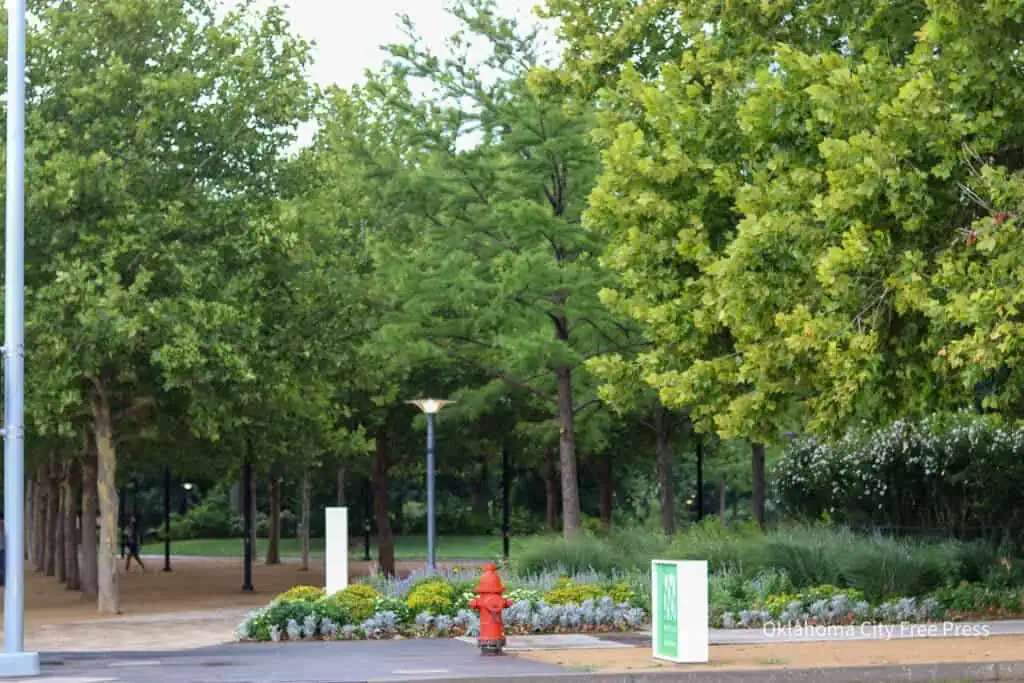
Britny Cordera is a poet and journalist whose reporting has focused on environmental justice, culture, and community resilience in Oklahoma City, the state and nation.
